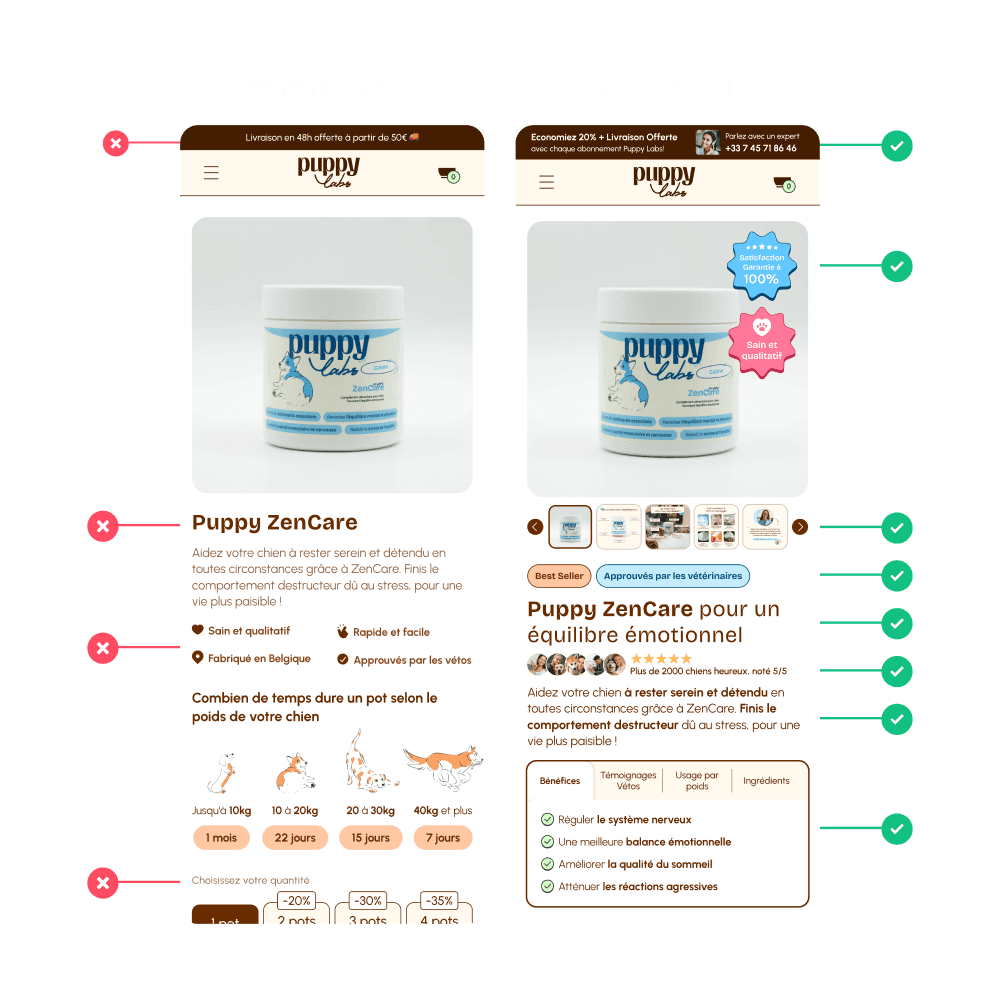Conversion Rate Optimization
How often should you run A/B tests on landing pages to increase conversions
Author
Mark M.
Published
June 19, 2024
Reading Time
6 min
In the competitive world of digital marketing, optimizing your landing page can make or break the success of your campaigns. A/B testing is one of the most effective strategies to fine-tune your pages, but implementing these tests correctly is crucial. This guide provides actionable insights to help you maximize the impact of your A/B tests.
Why A/B Testing Matters
A/B testing allows you to compare two versions of a web page to determine which one performs better. By testing different elements and configurations, you can make data-driven decisions to improve user experience and increase conversion rates.
What You’ll Learn
Optimal Test Duration
Determining Sample Size
Frequency and Sequencing of Tests
Ensuring Statistical Significance
Key Elements to Test
1. Optimal Test Duration: Capturing Comprehensive Data
To get a clear picture of user behavior, each A/B test should run for at least one full week. This duration helps you account for daily fluctuations and varying visitor behaviors throughout the week. Rushing through tests can lead to misleading results. By allowing sufficient time, you ensure that the data collected represents a broader range of user interactions.
2. Determining Sample Size: The More, the Merrier
A crucial factor in A/B testing is having a robust sample size for each variant. Aim for at least 1,000 visitors per variant to achieve reliable results, though the exact number can vary. Use online tools like A/B test sample size calculators to figure out the precise sample size needed based on your current conversion rate and the minimum detectable effect size.
3. Frequency and Sequencing: One Step at a Time
Instead of running multiple tests simultaneously, focus on one variable at a time. This approach helps you avoid overlapping or conflicting results. Prioritize your tests based on the potential impact on conversion rates. Remember, the goal is not to test as frequently as possible, but to make meaningful changes that drive better results.
4. Achieving Statistical Significance: Patience Pays Off
Statistical significance is critical for determining whether your test results are meaningful. Run your tests until you achieve statistically significant results. If results are inconclusive, consider extending the test duration, increasing the sample size, or testing more substantial changes.
5. Elements to Test: Focus on High-Impact Areas
Not all elements of your landing page will have the same impact on user behavior. Prioritize testing the following key elements:
Headlines: Test different headlines to see which ones capture user attention best.
Calls-to-Action (CTAs): Experiment with CTA text, placement, and design.
Images: Different images can evoke different emotions; find what resonates best with your audience.
Layout: Test various page layouts to enhance user experience and navigation.
Colors: Color schemes can significantly influence mood and behavior.
Forms: Simplify or adjust form fields to reduce friction in the user journey.
Adding Value: Pro Tips for Effective A/B Testing
Start with Hypotheses: Before you start testing, develop hypotheses about why a particular change might improve performance. This structured approach will guide your analysis and help you learn more from each test.
Use Heatmaps: Heatmap tools can provide insights into how users interact with your page. Use this information to identify which areas to test first.
Iterative Testing: A/B testing is an ongoing process. After implementing a winning variant, continue the process by testing further refinements.
Conclusion: Key Takeaways
By adhering to these guidelines, you'll ensure your A/B testing efforts are both effective and insightful:
Run tests for at least one full week to capture all variations in user behavior.
Ensure a sufficient sample size, with at least 1,000 visitors per variant.
Test variables sequentially to avoid overlapping or conflicting results.
Wait for statistically significant results before making decisions.
Prioritize and focus on high-impact elements such as headlines, CTAs, images, layouts, colors, and forms.
A/B testing, when done correctly, can significantly enhance your landing page performance, leading to higher conversion rates and a more satisfying user experience. Stick to these best practices to make the most out of your A/B testing endeavors.








